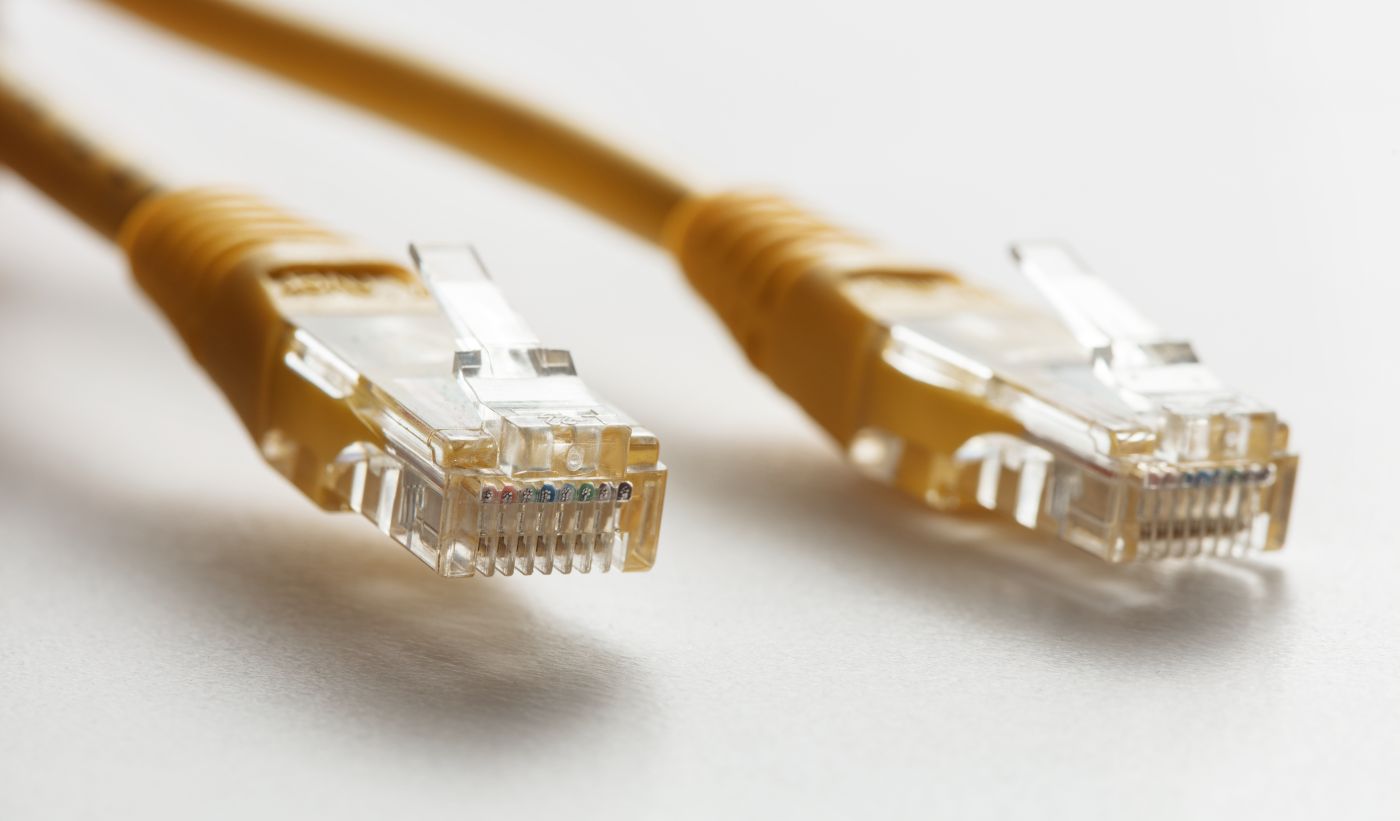What is EoMPLS and How Does It Work?

Are you struggling to wrap your head around EoMPLS? Don’t worry, you’re not alone. EoMPLS, or Ethernet over Multiprotocol Label Switching, may sound like a complex jumble of acronyms, but it’s a powerful technology that can greatly enhance your network capabilities. In this comprehensive guide, we will demystify EoMPLS and provide you with a clear understanding of its inner workings.
Whether you’re an IT professional or a network manager, this article will equip you with the knowledge you need to master EoMPLS. We’ll delve into the fundamental concepts, dissect the technical components, and explore real-world use cases to illustrate how EoMPLS can benefit your organization.
Throughout this guide, we’ll steer clear of jargon and complicated terminology, presenting the information in a concise and accessible manner. So, let’s dive in and unlock the potential of EoMPLS together.
Understanding The Basics Of MPLS Network
Multiprotocol Label Switching (MPLS) is a technique developed in the 1990s to speed up network connections by sending packets along predefined paths, reducing the decision-making time for routers. Unlike traditional routing, which involves independent decisions by each router and potential path variations, MPLS ensures consistent paths using labels in packet headers. While MPLS can create private paths, it does not encrypt traffic, making it less secure without additional encryption methods like VPNs. Though it provides speed and reliability for real-time applications and WAN setups, MPLS is expensive, time-consuming to set up, and challenging to scale, particularly with the rise of cloud services.
Yet, beyond its prowess in switching, MPLS excels in privacy and network organization. Creating an MPLS VPN tunnel (Virtual Private Networks tunnel) enables secure communication channels within shared network environments, ensuring data integrity and confidentiality through distinct label assignments.

Different Routers For MPLS
In the context of networking, there are multiple EoMPLS and MPLS routers in a network topology. Here’s what each might represent in a typical MPLS scenario:
R1: Ingress Provider Edge (PE) Router
R1 is the ingress router responsible for receiving traffic from the local area network (LAN). When an IP packet arrives at R1, it encapsulates the packet within a frame into an Ethernet Header and assigns an MPLS label based on the destination IP address. This label is chosen from the router’s label forwarding table, which maps the destination to a specific path within the MPLS network.
In an EoMPLS network, the MAC source-destination address is pivotal. The source MAC address identifies the sender, while the destination MAC address reports the ingress PE router (R1). Within the Ethernet frame, the IP packet contains source and destination IP addresses, identifying the sender and recipient. These MAC addresses guide the packet’s route from the source LAN to the final destination network, remaining unchanged within the MPLS network.
R2: Label Switch Router (LSR)
R2 is a Label Switch Router (LSR) that operates within the MPLS core network. Its main role is to forward MPLS packets based on their labels. When a packet arrives at R2, the router reads the existing label, swaps it with a new label from its forwarding table, and sends it to the next hop in the network. This process is known as label swapping and is essential for the efficient routing of packets through the MPLS network. R2 acts as an intermediary, facilitating the seamless and rapid forwarding of labeled packets across the MPLS core.
R3: Egress Provider Edge (PE) Router
R3 is the egress router that receives the MPLS packet as it exits the core network. At R3, the MPLS label is stripped off, revealing the original Ethernet frame. The egress PE router then forwards this Ethernet frame to its final destination within the destination network. R3’s role is crucial as it marks the exit point from the MPLS network and performs the final step of label removal, ensuring the packet is delivered accurately to the end device.

Use EoMPLS WAN Technology
While MPLS revolutionized network switching, it initially focused on supporting traditional IP traffic. Ethernet LAN became the preferred technology as it needed to extend its capabilities on a larger scale. This led to the development of EoMPLS, which combines the best of both worlds – the simplicity and ubiquity of Ethernet with the efficiency and traffic engineering capabilities of MPLS.
Ethernet over MPLS is a technology that allows businesses to connect their various locations over wide distances using Ethernet but with the added benefits of MPLS. Imagine you have offices in different cities and you want them to communicate as if they were all on the same local network. EoMPLS makes this possible by combining the straightforward, fast nature of Ethernet with the advanced capabilities of MPLS, such as scalability and quality of service. This is especially useful for businesses needing reliable and high-performance connections for activities like linking data centers, connecting branch offices, or setting up disaster recovery systems.
In practical terms, EoMPLS works by connecting your local network devices, known as customer edge (CE) devices, to the provider’s network devices, called provider edge (PE) routers. When your data packets reach these PE routers, they are tagged with MPLS labels and sent through the provider’s MPLS network. These labels help route the packets efficiently and ensure they are delivered quickly and reliably, with priority given to important data if needed. Essentially, EoMPLS leverages MPLS to extend the reach of Ethernet, providing a robust and flexible solution for wide-area networking.
For the IP packet routing, an ingress Provider Edge (PE) router encapsulates incoming IP packets in Ethernet frames and assigns MPLS labels based on destination IP addresses. These labels guide the packets through the MPLS network, with each Label Switch Router (LSR) swapping labels for correct forwarding. At the egress PE router, the MPLS label is removed, and the Ethernet frame is sent to its final destination, providing seamless WAN connectivity.
Comparing Related WAN Technologies
While EoMPLS is a powerful technology for extending Ethernet networks, it’s important to understand how it compares to other MPLS-based technologies. Let’s look at two common alternatives to EoMPLS: VPLS (Virtual Private LAN Service) and MPLS-TP (MPLS Transport Profile).
Difference Between EoMPLS And VPLS
Virtual Private LAN Service (VPLS) is another MPLS-based technology that enables the creation of virtual LANs over a wide area network. Like EoMPLS, VPLS allows for seamless LAN extension, but it operates at the data link layer instead of the network layer. VPLS can be a suitable choice when organizations require more granular control over Layer 2 traffic or when they need to support legacy non-Ethernet protocols.
Difference Between EoMPLS And MPLS-TP
MPLS Transport Profile (MPLS-TP) is a subset of MPLS specifically designed for transport networks. Unlike EoMPLS and VPLS, MPLS-TP focuses on providing deterministic packet transport and fault management capabilities. It is commonly used in telecommunications networks where strict service level agreements and performance guarantees are required.
Difference Between EoMPLS And SD-WAN
EoMPLS and SD-WAN serve different purposes and offer unique advantages. EoMPLS is designed to extend Ethernet LANs over MPLS networks with minimal complexity, making it a reliable choice for certain use cases. On the other hand, SD-WAN leverages software-defined networking (SDN) principles to dynamically route traffic across various WAN links, including MPLS, broadband, and LTE. Both EoMPLS and SD-WAN are valuable, with EoMPLS focusing on extending LANs and SD-WAN offering a versatile, cloud-ready connectivity solution for modern networking needs.

Common Challenges and Troubleshooting Tips for EoMPLS
While EoMPLS can greatly enhance network capabilities, it’s important to be aware of potential challenges and have troubleshooting strategies in place. Here are some common challenges you may encounter with EoMPLS, along with tips for troubleshooting:
- Latency and packet loss: EoMPLS relies on the underlying MPLS network, which introduces additional latency and potential packet loss. To mitigate these issues, ensure that your network infrastructure has sufficient bandwidth and low latency. Implement QoS mechanisms to prioritize critical traffic and minimize packet loss.
- Availability of protected path: Ensuring the availability of a protected path in EoMPLS can be challenging due to issues with path redundancy, performance variability, and configuration complexity. To address these, regularly test and monitor both primary and backup paths, design the network with diverse redundant paths, benchmark performance under various conditions, and conduct proactive maintenance.
- Configuration errors: Incorrect configuration settings can lead to connectivity issues or suboptimal performance. Double-check your configuration settings, ensure consistency across network devices, and follow vendor documentation and best practices. Regularly review and audit configuration settings to catch any potential errors.
- Interoperability issues: EoMPLS relies on the interoperability of different network devices and service providers. If you encounter interoperability issues, work closely with your vendors and service providers to troubleshoot and resolve the problems. Ensure that firmware and software versions are up-to-date and compatible with each other.
- Security and privacy concerns: Extending your Ethernet network over a wide area introduces security and privacy considerations. Implement appropriate security measures, such as encryption and access controls, to protect your data. Regularly monitor and audit network traffic to detect any potential security breaches.
EoMPLS Best Practices and Optimization Techniques
To optimize your EoMPLS deployment and maximize network performance, consider the following best practices and optimization techniques:
- Bandwidth planning: Carefully assess your bandwidth requirements and allocate sufficient bandwidth for each site connected via EoMPLS. Consider factors such as anticipated traffic volume, application requirements, and future growth. Regularly monitor bandwidth utilization and adjust capacity as needed.
- QoS policies: Implement Quality of Service (QoS) policies to prioritize critical traffic and ensure optimal performance for voice, video, and data applications. Define appropriate QoS classes and assign them to different types of traffic based on their importance and sensitivity to latency or packet loss.
- Link redundancy: Implement link redundancy to ensure high availability and minimize downtime. Consider using redundant PE routers, diverse MPLS paths, or link aggregation techniques to create resilient connections. Regularly test failover scenarios to verify the effectiveness of your redundancy setup.
- Monitoring and performance optimization: Regularly monitor your EoMPLS network to identify potential bottlenecks or performance issues. Use network monitoring tools to track key performance indicators, such as latency, packet loss, and bandwidth utilization. Implement proactive measures, such as traffic engineering or capacity planning, to optimize network performance.
Final Thoughts on How EoMPLS Works
In conclusion, EoMPLS is a powerful technology that allows organizations to extend their Ethernet networks over wide area networks, leveraging the efficiency and traffic engineering capabilities of MPLS. By understanding the basics of MPLS, the evolution to EoMPLS, and the benefits it brings, you can unlock the potential of this technology and optimize your network performance.
Whether you’re looking to seamlessly extend your LAN, simplify network management, or achieve cost savings, EoMPLS offers a range of benefits. By carefully planning your deployment and leveraging the flexibility of EoMPLS, you can tailor your network to meet the specific needs of your organization, ensuring reliability, scalability, and performance.
If you really are looking for the perfect solution, then IPTP Networks has got you covered. With over 28 years of industry experience and a presence in major cities worldwide, IPTP Networks provides unmatched expertise and a robust Tier-1 network infrastructure.
Join the many businesses that have benefited from their extensive global backbone and advanced MPLS services. Whether you aim to optimize operations, improve connectivity, or deploy state-of-the-art networking solutions, IPTP Networks is equipped to help.
Contact us for more information.
